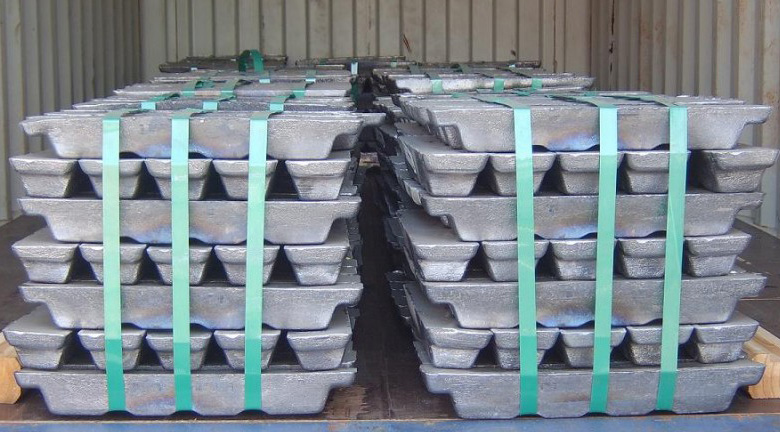| Elements | Specification %Wt. |
|---|---|
| Aluminium (Al) | 0.001 |
| Antimony (Sb) | 0.001 |
| Arsenic (As) | 0.001 |
| Barium (Ba) | 0.001 |
| Bismuth (Bi) | 0.05 |
| Cadmium (Cd) | 0.001 |
| Calcium (Ca) | 0.005 |
| Chromium (Cr) | 0.0002 |
| Cobalt (Co) | 0.0002 |
| Copper (Cu) | 0.0015 |
| Iron (Fe) | 0.002 |
| Manganese (Mn) | 0.00005 |
| Mercury (Hg) | 0.0001 |
| Nickel (Ni) | 0.0002 |
| Platinum (Pt) | 0.00001 |
| Selenium (Se) | 0.001 |
| Silver (Ag) | 0.01 |
| Sulphur (S) | 0.001 |
| Tellurium (Te) | 0.0002 |
| Tin (Sn) | 0.001 |
| Zinc (Zn) | 0.001 |
| Gold (Au) | 0.0001 |
| Thallium (Tl) | 0.01 |
| Lead (Pb) | Remainder |
Pure Lead

The battery sector is the single largest consumer of lead, accounting for around three-quarters of the demand. It can be sub-divided into the following groups:
SLI (Starting-Lighting-Ignition) batteries, which currently accounts for around half of the total lead demand. These are mainly used incars and light vehicles, but are also found in other applications such as golf carts and boats. SLI battery demand in turn can be split into original equipment and replacement, with replacement demand outstripping original equipment demand by about 4:1 in mature markets.
Industrial batteries, which currently consumes around a quarter of the total lead produced. This sector can be split roughly 50:50 into stationary and traction batteries. Stationary batteries are principally used in back up power supply systems; traction batteries are used for motive power in equipment such as forklift trucks and motorised wheelchairs.
The remainder is used in non-battery applications. The second largest current end use of lead for non-battery applications, accounting for around 8% of lead consumption, is the chemical industry, in the form of lead-based pigments and other compounds. Principal markets are for cathode ray tubes used in television screens and computer monitors,and for Poly Vinyl Chloride (PVC) stabilisers.
© 2017 Mittal Pigments Pvt. Ltd. All rights reserved.
